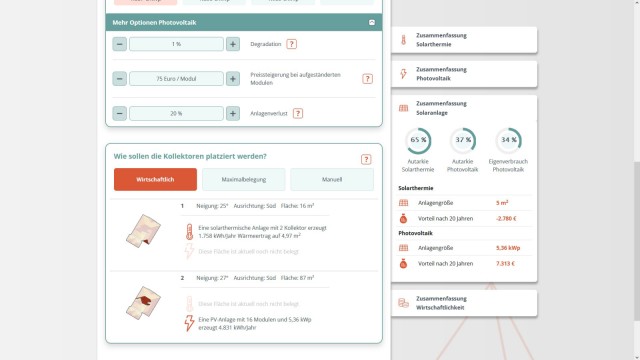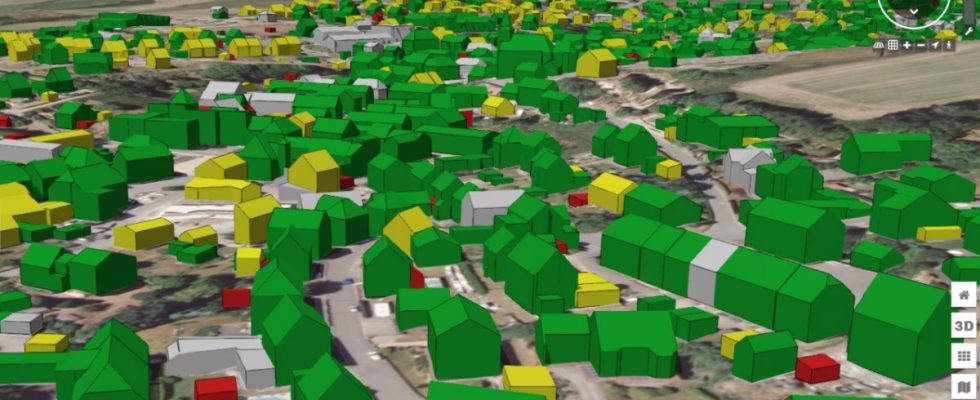Is it worth having a solar system on this property? Where would parking spaces in the community make sense? How does an area protect itself from flooding? 17 projects from all over Bavaria spent a year looking for the solution to all of these questions in one tool: the digital twin. Most have created a 3D representation of their project and linked it to various data. The final event of the TwinBy program with Digital Minister Fabian Mehring (FW) took place in Munich on Thursday.
The exhibitors have set up their stands around the seating area in front of the stage in the “Macherei” in Munich. All project representatives are equipped with screens to present their work over the past few months to anyone interested. Michael Beck is standing at one of the stands with his colleague Julia Maisel. He has been responsible for the management of the Geoinformation Systems (GIS) department in Kulmbach since it was founded; she has been supporting the department for almost a year and a half.
Julia Maisel and Michael Beck presented the Kulmbach district’s digital twin for energy planning on Thursday.
(Photo: private)
Both took a leading role in the development of their district’s digital twin. “Most people associate Kulmbach with good beer. But we also have two large companies that produce heat pumps,” says Beck. That’s why making different forms of energy usable has been an issue for a long time. Over the past ten years, the region in Upper Franconia has been involved in research projects on near-surface geothermal energy; since 2007, Kulmbach has been building several infrastructures for geodata. So far, however, only at the district level.
Calculate costs for solar system
With the “Intermunicipal 3D Energy Planning 4.0” project, the potential for heat pumps, green roofs and solar systems on individual buildings and properties can now be identified. “The home builder ultimately wants to know what is possible on his property,” says Beck. GIS employee Maisel demonstrates how the publicly accessible model can be used in the future at the exhibition at the closing event: The color code not only shows which properties are suitable for a solar system, for example. The individual buildings are clickable and a link leads to an assistant. There, homeowners can provide individual information about their household and have construction costs or CO₂ savings calculated.

With this tool, the people of Kulmbach will be able to see in the future what effect a solar system or heat pump would have on their property.
(Photo: tetraeder.solar GmbH)
However, the twin that Beck and Maisel are presenting on Thursday is only a beta version. Those responsible for GIS expect the application to go live in the next few weeks. Then it’s not just citizens who will find new help for their energy planning. The administrations in the district and the Northern Bavaria Energy Agency should also use the model.
In the future, Kulmbach would like to work on additional twins in order to address issues such as broadband expansion, construction planning and mobility. Completed concepts already exist for some areas. Unlike the digital double for energy planning, the Upper Franconian city does not have to start from scratch for further projects. Through the Smart District Data Infrastructure (SDDI), municipalities in Bavaria have access to a common catalog. There, the TwinBy participants listed all the resources from which they used data for their twin. In addition, all projects use standardized data formats. “This program has created a series of recipes that can now be transferred to other communities,” says Thomas Kolbe, SDDI project manager at the Technical University (TU) of Munich. With the infrastructure created, a municipality can help others in the future and at the same time benefit from their findings.
“TwinBy 2.0” is to follow
Kolbe’s team has not only been responsible for deploying the SDDI over the past few months. Like other external service providers, he advised, supported and organized workshops during the project. Maisel from Kulmbach took part in around half of the offers. Although she was already deeply involved in the topic as a qualified cartographer, she was able to take the content with her: “The lectures were particularly helpful for people who come from other areas.”
Oliver Bähr and Klemens Behl are two of them. They have developed a bed occupancy tool for the Aschaffenburg-Alzenau Clinic in order to distribute patients in the emergency room more efficiently to the available places. “Without the support of the external partners, the project would not have worked,” says Bähr. Others also cited the lack of specialist knowledge and thus the dependence on service providers in the panel discussions at the final event as the biggest hurdle. Digital Minister Mehring also has his say between the panels. His ministry was responsible for TwinBy and funded the project with a total of around one million euros.
Mehring’s predecessor Judith Gerlach (CSU) was responsible for the program until October 2023. But even though he didn’t write the project, the current digital minister seems satisfied: “Today we are sending a signal for a modern Bavaria and innovative administration.” At the Budget Committee meeting last Monday, Mehring also suggested continuing the project in an expanded form as “TwinBy 2.0”. Approval from the state parliament is still pending.

